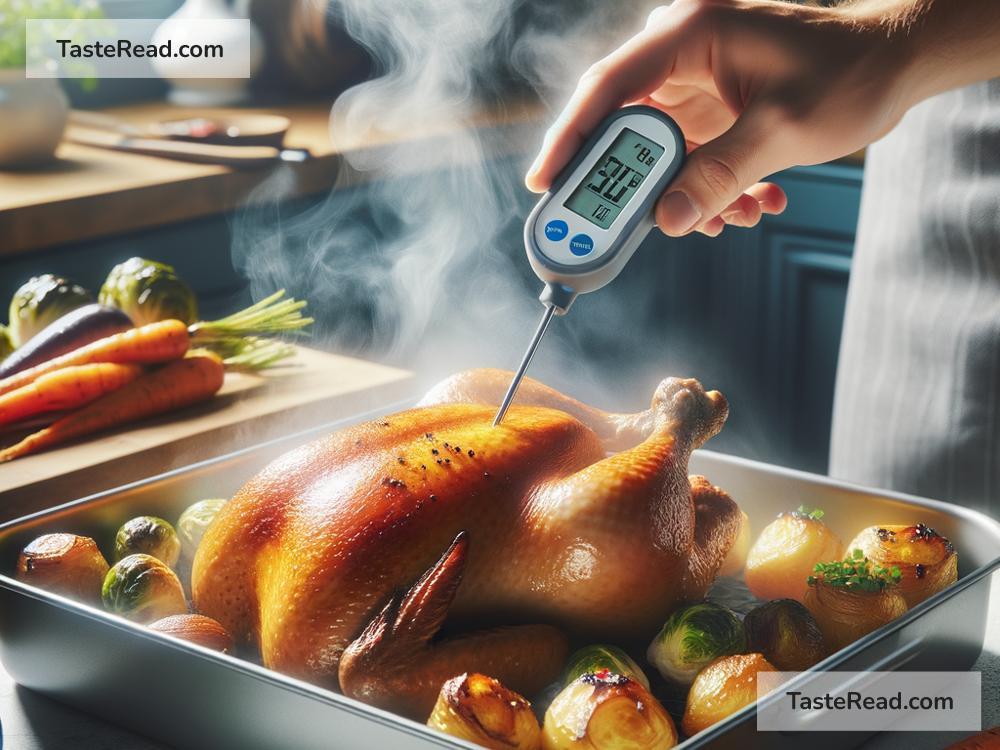Title: Master the Art of Perfect Doneness: How to Use a Meat Thermometer Like a Pro
Imagine slicing into a piece of meat you’ve spent hours cooking, only to find it’s overcooked or, worse, undercooked. We’ve all been there, and it’s enough to turn a meal from delightful to disappointing. But worry no more! The humble meat thermometer is here to save your culinary creations. This simple tool can make the difference between an okay meal and a mouthwatering masterpiece. Here’s a beginner-friendly guide on how to use a meat thermometer to achieve perfect doneness every time.
What is a Meat Thermometer?
A meat thermometer is a cook’s best friend. It’s a simple device that measures the internal temperature of meat, helping you ensure it’s safely and perfectly cooked. There are several types, including digital, dial, and smart thermometers, each with its own benefits.
Why Use a Meat Thermometer?
- Safety: Cooking meat to the right temperature ensures harmful bacteria are killed.
- Quality: It helps you cook meat to your preferred level of doneness, retaining its juiciness and flavor.
- Peace of Mind: No more guessing if the meat is done. A meat thermometer takes the guesswork out of cooking.
Choosing the Right Meat Thermometer
- Instant-Read Thermometers: Quick and convenient, they give a temperature reading in seconds.
- Oven-Safe Thermometers: These can stay in the meat while it roasts in the oven, giving you a continuous temperature reading.
- Smart Thermometers: Connected to a smartphone app, they alert you when your meat reaches the perfect temperature.
Using a Meat Thermometer: Step-By-Step
1. Test Your Thermometer
Before anything else, make sure your meat thermometer is accurate by testing it in a glass of ice water. It should read 32°F (0°C). If it doesn’t, it may need calibration or replacement.
2. Know the Ideal Temperature
The key to using a meat thermometer is knowing the target temperature for your meat. Here’s a quick guide:
- Beef, Pork, and Lamb: 145°F (63°C) for medium-rare, 160°F (71°C) for medium.
- Poultry: 165°F (74°C) for chicken and turkey, ensuring it’s safe to eat.
- Fish: 145°F (63°C), but many chefs recommend pulling it off the heat at 140°F (60°C) for a flakier texture.
3. Insert It Correctly
To get an accurate reading, insert the thermometer into the thickest part of the meat, away from bone, fat, or gristle. This helps ensure you’re measuring the meat’s actual internal temperature.
4. Wait for the Right Time
If you’re using an instant-read thermometer, insert it toward the end of the cooking time to check if the meat is done. For oven-safe models, leave it in the meat throughout cooking, and keep an eye on the temperature.
5. Rest Your Meat
Remember, meat continues to cook (“carryover cooking”) after it’s removed from the heat. This can increase the internal temperature by 5°F to 10°F. So, pull your meat off the heat a few degrees before it reaches the desired doneness.
6. Cleaning and Maintenance
Always clean your thermometer with warm, soapy water after each use. Proper care ensures your thermometer remains accurate and extends its lifespan.
Common Mistakes to Avoid
- Not Testing for Accuracy: Regularly test your meat thermometer to ensure it’s giving accurate readings.
- Misplacing the Thermometer: Inserting the thermometer too close to the bone or in too shallow of a piece of meat can give false readings.
- Not Allowing for Carryover Cooking: Failing to account for carryover cooking can result in overcooked meat. Remove the meat from the heat a bit early, and let it rest.
Conclusion
Perfectly cooked meat is an art, and a meat thermometer is your brush. By understanding how to properly use this tool, you can ensure your meat is safe, delicious, and cooked exactly to your liking. No more overcooked steaks or undercooked poultry. With a meat thermometer in hand, you’re well on your way to becoming a culinary master in your own kitchen.
Remember, cooking should be fun and stress-free. A meat thermometer takes out the guesswork, leaving you with perfectly cooked meat every time. So, go ahead and give it a try. Your taste buds (and dinner guests) will thank you!


